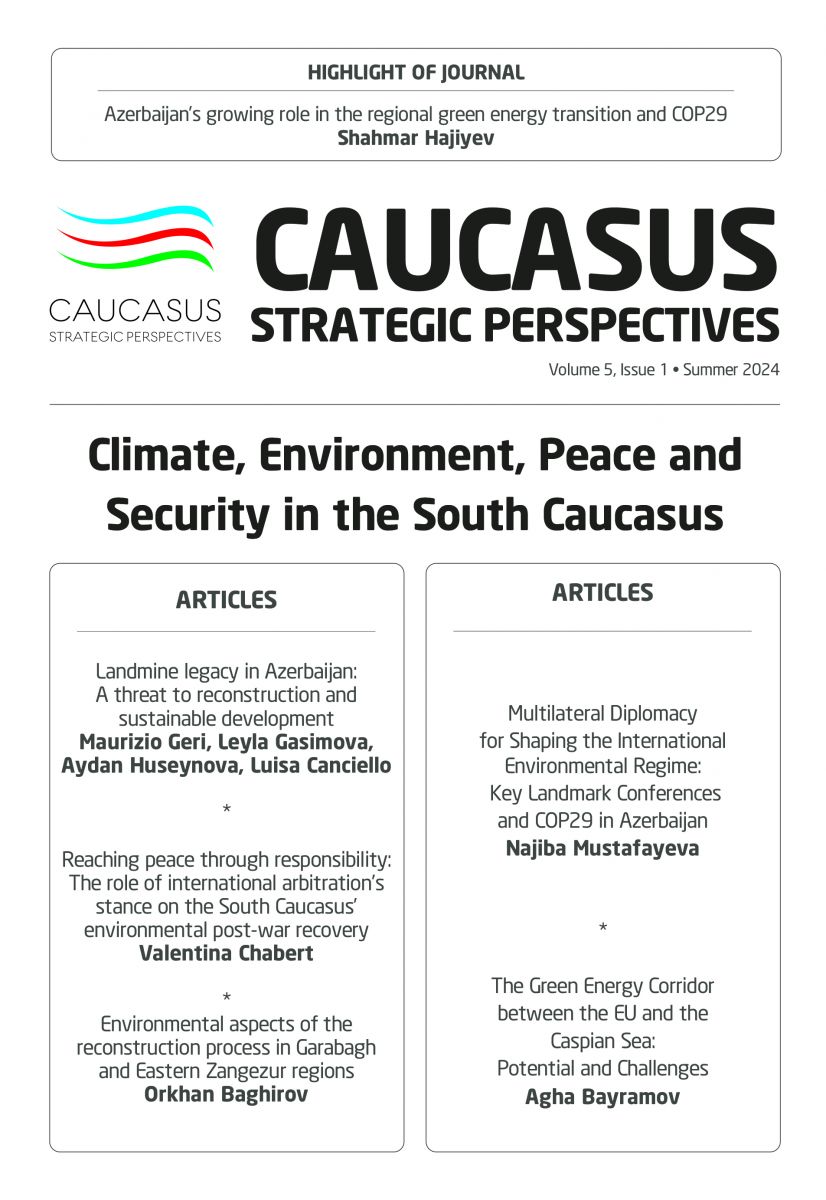Environmental aspects of the reconstruction process in Garabagh and Eastern Zangezur regions
The primary objective of this article is to analyse the environmental dimensions of the reconstruction process in Azerbaijan’s liberated territories. It begins by examining the environmental impact of the occupation of Armenia, highlighting the extensive damage caused to the ecosystem of the liberated territories, including flora, fauna, and water resources. Following the initial analysis of the environmental repercussions of the occupation, the article delves into the environmental aspects of the reconstruction effort, showcasing various measures and projects aimed at revitalizing the region’s flora and fauna, promoting renewable energy sources such as wind and solar energy, establishing ‘Green Energy Zones’ and ‘Smart Villages’, and employing smart agriculture techniques. Through these strategies, Azerbaijan demonstrates a comprehensive approach not only to addressing the environmental devastation caused by the occupation but also to proactively creating new ecosystems, which aligns with global sustainable development goals and will have less environmental impact. This indicates Azerbaijan’s commitment to not only restoring but also enhancing the environmental sustainability of the liberated territories.
Latest news
- 12/27/2024 Call for Submissions-Caucasus Strategic Perspectives, Volume 6, Issue 1, Summer 2025 668 views
Popular articles
- 07/18/2022 The Russia–Ukraine War: Perspective of Azerbaijan 4325 views
- 10/14/2020 The Non-Aligned Movement: In Pursuit of Validity and Relevance in the Contemporary Global Order 3307 views
- 10/14/2020 Vicious Circle of the South Caucasus: Intra-Regional Conflicts and Geopolitical Heterogeneity 3291 views
- 10/14/2020 Relevance of Non-Alignment for Azerbaijan’s Foreign and Security Policy 3020 views





